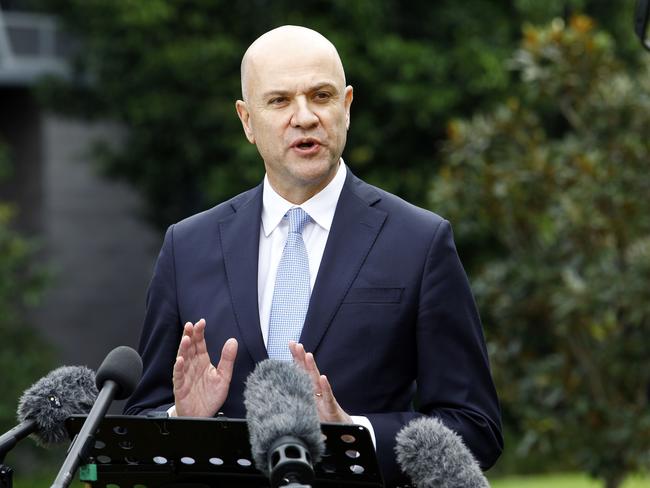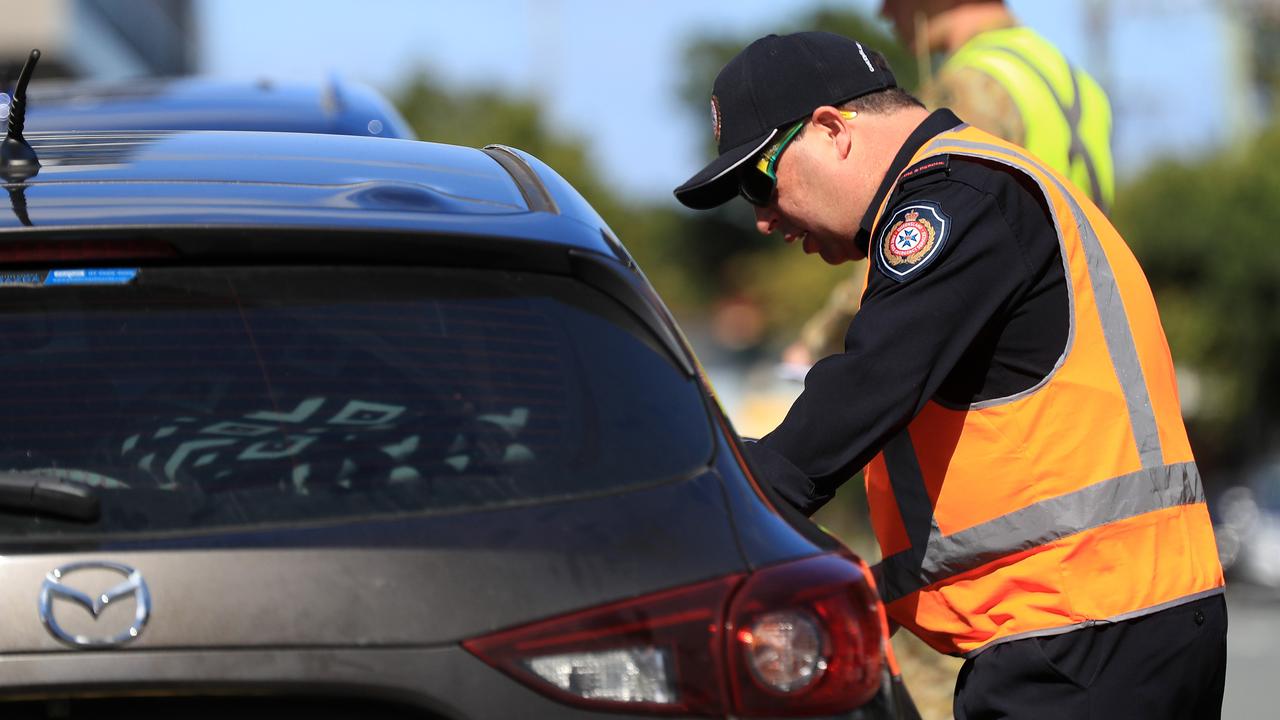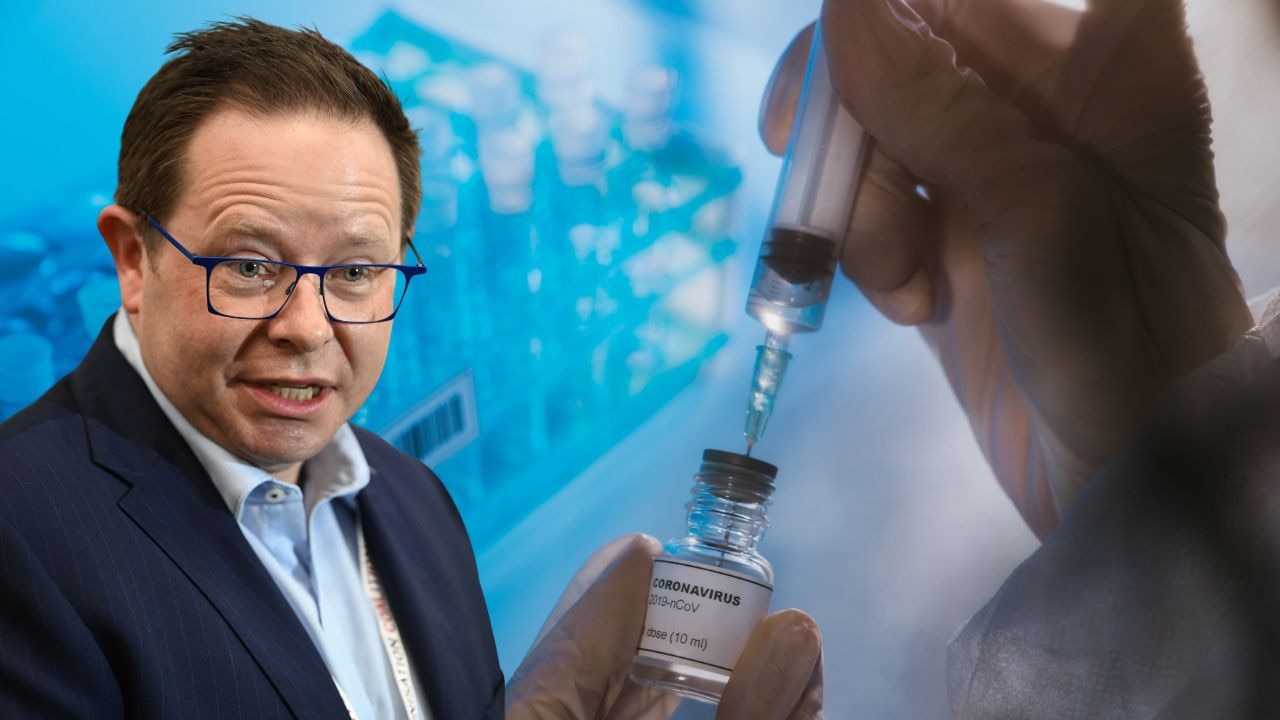Queensland’s ‘alarming’ stats amid grim Covid wave
New data shows where Queensland sits with Covid vaccinations, with the statistics alarming the chief health officer amid the current “significant” wave that could be worse than the first. COVID Q&A

QLD Coronavirus News
Don't miss out on the headlines from QLD Coronavirus News. Followed categories will be added to My News.
Queensland has the lowest take-up of Covid-19 booster shots in the nation amid grim warnings the state’s current virus surge has all the ingredients to be as bad as the first wave.
New Australian government data shows just 63.6 per cent of Queenslanders have had three or more doses of the jab, far behind Western Australia (82.8 per cent) at the top and second-to-last New South Wales (68.3 per cent).
The worrying booster rates come as chief health officer Dr John Gerrard, writing for The Courier-Mail, revealed 97 per cent of the more than 1330 Queenslanders who had died with Covid-19 were over the age of 50.

Dr Gerrard said every death was “heartbreaking” but it was “especially confounding” to learn many were not up-to-date with their jabs or weren’t vaccinated at all.
Already hospitalisations in Queensland due to Covid-19 have surged to 744 people – the highest it has been since early February during the decline of the first wave.
At the height of the first wave, 928 people with coronavirus were being cared for in hospital.
However, at that time Queensland did not have the added burden of a high number of influenza infections.

Deputy Premier Steven Miles on Sunday said the level of infection was having a “very substantial” impact on the state’s hospitals, with thousands of health staff unable to work due to catching Covid-19 or the flu.
Mater Health Services infectious diseases director Dr Paul Griffin said there needed to be “clear messaging” that the current Covid-19 wave was “very significant”.
“I think the (third wave) certainly has the makings (to be worse than the first wave),” Dr Griffin said.
“Perhaps if we get the third and fourth booster rates up, there’s a possibility it won’t.”
But the latest Covid-19 vaccination data shows that just 63.6 per cent of Queenslanders have had three or more doses of the jab – about 2.4 million people as of July 9 – which is well below other states and the national rate of 70.7 per cent.

Dr Gerrard stressed the need for people older than 50 to get their third and fourth booster jabs.
“Less than 50 per cent of Queenslanders aged over 65 have had their second booster and I’m alarmed by that,” he said.
From Monday, July 11, those aged 30 and older will be able to get their fourth Covid-19 jab, with the timing shortened to three months after the first booster or since they got Covid-19, whichever is sooner.
Federal Health Minister Mark Butler said the “very serious” current wave of Covid-19 was being driven by two new subvariants of the Omicron strain, known as BA.4 and BA.5, which had the “unique” danger of quick reinfection.
“The fact you had Covid earlier this year, the fact you may have only had Covid a couple of months ago, does not necessarily protect you from getting infected again,” Mr Butler said.
The federal government has moved to expand antiviral treatment for older Australians with Covid-19, making the medication available for home use and removing the need to go to hospital to be treated.
Everyone aged 70 or older can access Covid-19 antiviral medicines – which come in tablet and capsule form – via the pharmaceutical benefit scheme for take-home use.
Mr Butler said this brought down the cost to about $6 per round of treatment.
People older than 50 but younger than 70 will have to show they are at risk of getting severe Covid-19 infections.
COVID Q&A
Are there any regions where the wave is already peaking?
Looking at case numbers and hospital admissions, this wave appears to be consistent across Queensland.
Where should we consider voluntarily wearing a mask?
Masks should be worn wherever there are vulnerable people and in crowded indoor environments, where it is impossible to maintain social distancing. Older people or those who are immunocompromised, in particular, should wear masks in these situations.
When should a PCR test be considered?
The majority of Queenslanders will experience mild Covid-19 symptoms and should utilise RATs, which are widely available in the community. Individuals who are unwell or with risk factors for severe disease from Covid-19 should access PCR testing in consultation with their healthcare provider.
How accurate are rapid antigen tests for the new strains?
The accuracy of RAT kits may vary, according to their manufacture, however, the Therapeutic Goods Administration has approved more than 50 types of kits and assessed their sensitivity. RATs are best performed within seven days of the symptoms first appearing.
Is there any idea of what the true number of cases in Queensland would be?
We know there are undetected or unreported cases in the community, but it’s very
difficult to know what the true number is. We rely on people doing the right thing and
urge people to report their positive tests. To get a clear picture of the pandemic trend
we look at multiple measures. These include laboratory reports, self-reported RATs,
hospital admission rates, staff absenteeism rates, ambulance calls, and population blood antibody test results.





